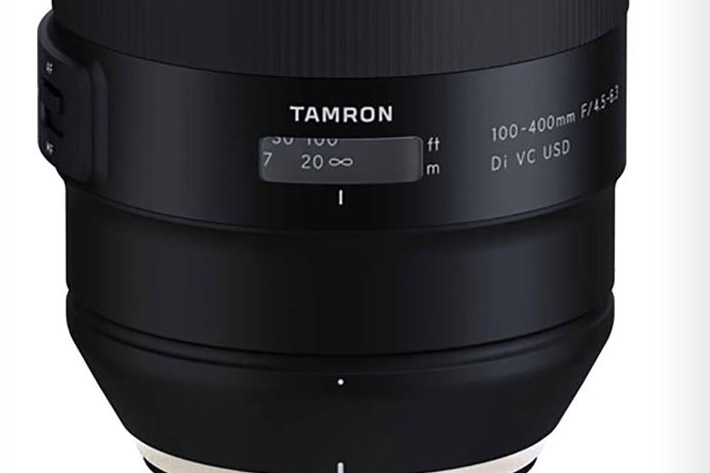
The Tamron 100-400mm F/4.5-6.3 Di VC USD promises to be the lightest lens of its kind, when it arrives, by the end of 2017, for Nikon and Canon DSLRs.
In development now, after a patent was revealed in the Summer of 2016, the new lens from Tamron is an ultra-telephoto zoom lens for full-frame DSLR cameras with, says the company, “superior image quality, advanced features and lightweight, compact design”. With 39.3 oz (1.1 Kg) the new lens is, at the moment, the lightest in this ultra-telephoto zoom lens category, and it will have to contend with “heavy-weight” lenses in the same category as the Canon EF 100-400mm f/4.5-5.6L IS II USM, which is “heavier” in weight and in cost. Or the Nikon AF-S NIKKOR 80-400mm f/4.5-5.6G ED VR, which belongs to the same category.
Tamron has produced some interesting lenses at more affordable prices so, although there is no indication of price, the new 100-400mm F/4.5-6.3 Di VC USD (Model A035) will probably cost somewhere around $1000. The company says that “the advanced optical design of Model A035 includes 3 LD (Low Dispersion) lens elements for greater aberration reduction and Tamron’s original eBAND Coating for superior anti-reflection performance. At 39.3 oz., the new lens is the lightest weight in its class and features magnesium material in key areas of the lens barrel to improve weight reduction, strength and portability.”
The new lens promises to deliver fast and precise autofocus performance and consistently powerful VC (Vibration Compensation) benefits thanks to the high-speed Dual MPU (Micro-Processing Unit) control system that is found in the latest Tamron lens models. The lens is also fully compatible with Tamron’s 1.4X teleconverter and the Tamron TAP-in Console that enables lens customizations for focus adjustments, VC mechanism adjustments and more. Additionally, an Arca Swiss compatible tripod mount is available as an optional accessory.
This combination of features and optional accessories, says Tamron, “join to create a lens that photographers everywhere will enjoy using in various shooting situations, including low-light conditions that require handheld operation as well as those where convenient attachment to a tripod is preferred.”
One interesting feature of modern ultra-zooms in this category is their capacity to focus at close distance. In this department the Tamron 100-400mm F/4.5-6.3 Di VC USD is in the same league as Nikon’s AF-S NIKKOR 80-400mm f/4.5-5.6G ED VR, which also focus close to the 1,5 meters range, but very distant from the Canon EF 100-400mm f/4.5-5.6L IS II USM, which is able to close focus at 98cm, a value similar to the one offered by Sony’s recent FE 100–400 mm G Master lens. Once you’ve used an ultra-telephoto lens able to focus so close, and if you need the feature, you’ll willingly pay the difference to be able to use it. So, that’s something to consider when buying such a long zoom.
Still, the range of the new 100-400mm for general use is within the “normal” for this type of lenses, and if the lens, which is said to offer a moisture-resistant construction and fluorine coating for weather protection, is reliable, fast and optically good, Tamron may have a winner in their hands. A lightweight lens of this segment can be a bonus for some photographers, and while some would go for the 150-600mm, even for BIF (birds in flight), I would always go for the 100-400mm, so Iam curious about this offer, although it is almost impossible to have a lens to test, living where I live.
My interest for a 100-400mm has a reason: the focal range has served me well, although my experience is with the Canon model. Since September 1998, and although I’ve tried, tested and used other lenses – including, Tamron 200-400, an old Tokina 80-400 bought to use with my old Nikon system (film), and others – I’ve owned Canon’s 100-400mm lenses, being now on my third lens of this type. From landscapes and flowers to birds and aircraft in flight, or museological photography, this has been one of the lenses I use the most. Meaning the 100-400mm will be attached to my camera most of the time.
